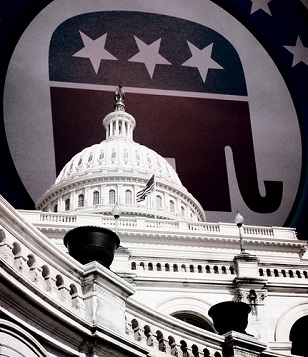Part of the Series
Moyers and Company
Much of the coverage of the government showdown has focused on a relatively small group of hardline conservatives within the Republican caucus who have backed their party’s leaders into a fight they didn’t want.
As Ryan Lizza noted in The New Yorker, these lawmakers mostly represent very safe, heavily Republican and disproportionately white districts that don’t look much like the rest of the country. Many of those on the front lines are recent arrivals to Capitol Hill, and they’re pushing a leadership they see as having been too willing to compromise with Democrats in the past.
It’s an important angle. Yet it also obscures what should be an obvious question: Since when do freshmen senators or one- or two-term reps push their congressional leadership around? Historically, it’s been the reverse. And since when does a newcomer to the Senate such as Ted Cruz (R-TX) have the right to tell House Republicans what to do? If there’s only a relatively small group of lawmakers who think defunding the law is a dandy idea, why has every budget resolution with such a provision won more than 200 Republican votes in the House of Representatives during the showdown? Why is this supposedly silent majority of Republicans so docile? Why don’t they push back?
The answer lies in the clout wielded by an extensive web of non-governmental conservative groups supported by mountains of dark money. Those groups see the Affordable Care Act as an existential threat to their worldview and their party and have waged a multipronged campaign to kill it in its cradle. Theirs is the ultimate inside/outside strategy: They fund primary challenges from the right by upstart candidates against incumbents they view as insufficiently pure. When those true believers get into office, these groups promote them relentlessly to the party’s activist base – filling their re-election coffers with donations by portraying them as courageous mavericks fighting against ossified “RINOS” (Republicans in Name Only). They mount “public education” campaigns and buy ad blitzes, and they coordinate messaging among friendly voices within the conservative media.
According to a report by Sheryl Gay Stolberg and Mike McIntire in The New York Times, a coalition of these groups has been plotting a budget crisis to shut down Obamacare for months.
Shortly after President Obama started his second term, a loose-knit coalition of conservative activists led by former Attorney General Edwin Meese III gathered in the capital to plot strategy. Their push to repeal Mr. Obama’s health care law was going nowhere, and they desperately needed a new plan.
Out of that session, held one morning in a location the members insist on keeping secret, came a little-noticed “blueprint to defunding Obamacare,” signed by Mr. Meese and leaders of more than three dozen conservative groups.
It articulated a take-no-prisoners legislative strategy that had long percolated in conservative circles: that Republicans could derail the health care overhaul if conservative lawmakers were willing to push fellow Republicans — including their cautious leaders — into cutting off financing for the entire federal government.
With a broad, well-funded campaign, these groups have effectively shifted the balance of power in conservative Washington away from Republican leaders on the Hill and onto a cadre of true believers who will go to any length to destroy a modest set of health care reforms that, just 20 years ago, the very same conservative movement was itself advancing.
So just looking at the rank-and-file members of the “suicide caucus” isn’t enough – it’s like focusing on the marionette rather than the puppet-master.
Check out our interactive feature to meet some of the key people pulling the strings.
Angry, shocked, overwhelmed? Take action: Support independent media.
We’ve borne witness to a chaotic first few months in Trump’s presidency.
Over the last months, each executive order has delivered shock and bewilderment — a core part of a strategy to make the right-wing turn feel inevitable and overwhelming. But, as organizer Sandra Avalos implored us to remember in Truthout last November, “Together, we are more powerful than Trump.”
Indeed, the Trump administration is pushing through executive orders, but — as we’ve reported at Truthout — many are in legal limbo and face court challenges from unions and civil rights groups. Efforts to quash anti-racist teaching and DEI programs are stalled by education faculty, staff, and students refusing to comply. And communities across the country are coming together to raise the alarm on ICE raids, inform neighbors of their civil rights, and protect each other in moving shows of solidarity.
It will be a long fight ahead. And as nonprofit movement media, Truthout plans to be there documenting and uplifting resistance.
As we undertake this life-sustaining work, we appeal for your support. Please, if you find value in what we do, join our community of sustainers by making a monthly or one-time gift.
